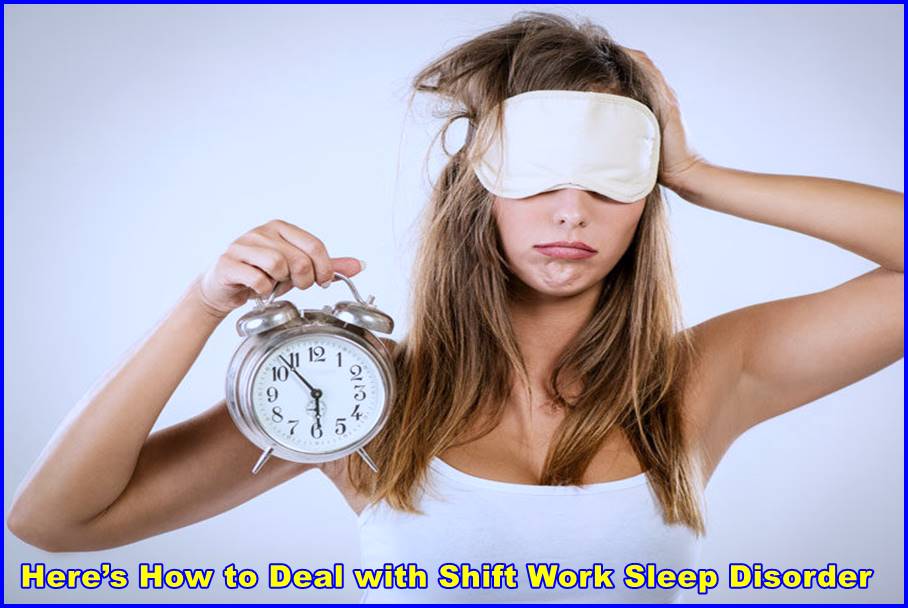Here’s How to Deal with Shift Work Sleep Disorder
Most shift workers get between one and four fewer hours of sleep compared to non-shift workers. People should get between seven and nine hours of sleep every day.
It is crucial that shift workers prioritize sleep. Even if it is daylight outside, those who work schedules different than the normal office hour’s pattern may need to prepare for sleep.
What is Shift Work Sleep Disorder?
Shift work sleep problem, also known as shift work disorder, is a circadian rhythm sleep condition that mostly affects persons who work schedules other than the traditional job hours. Night shifts, early morning shifts, evening shifts, and rotating shifts are all examples of this.
SWSD can make you sleepy while you’re at work or give you insomnia when you’re attempting to sleep. As a result, you might lose one to four hours of sleep per night! This can result in a severe sleep deficit—not only is sleep deprivation tiring, but it can also be deadly. Sleep deprivation and excessive drowsiness can impair mental clarity and put you at risk for harm and accidents.
Techniques for Relaxation
Relaxation methods are easy routines that can help you relax, deal with stress, and sleep better. Incorporating one or more relaxation methods into your bedtime routine may significantly improve the quality of your sleep as well as the number of hours you sleep.
The following are some of my favourite relaxing techniques:
- Exercises in breathing
- Every electronic device in the home is turned off during the Power down Hour.
- Visualization with a guide
- There is truly something for everyone out there. Give one of them a go and see how it makes you feel.
Taking a nap
A good nap boosts your energy levels during the day, so you won’t feel as drained after you get up in the morning. Increased alertness, lower stress, improved stamina, and a stronger immune system are some of the advantages of napping.
However, don’t nap for more than 90 minutes; resting for too long or too close to night might make it more difficult to fall asleep later. After a nap, the objective is to feel more awake and aware, not bewildered and sluggish. Modalert is one medicine which helps in taking naps.
Create the Perfect Sleeping Environment
It may seem obvious, but you want to make sure your bedroom is a comfortable place to sleep. There’s a lot you can do to make sure your sleeping environment is genuinely favourable to sleeping well. Blackout curtains are vital for filtering out any sunlight or ambient light that may be keeping you awake if you work at night and sleep during the day.
If adding blackout curtains to your sleeping environment isn’t feasible, a nice blackout sleep eye mask is a great option. This is particularly the case if your job needs you to switch sleeping locations regularly. If you’re the only one in your sleeping quarters who sticks to your timetable. Waklert creates a perfect environment for the on in need.
Establish a regular sleep schedule
It may be difficult to get into the swing of things, but sticking to a regular sleep pattern is one of the nicest options you can do for excellent sleep. This is particularly true if you work when the rest of the family sleeps. Modvigil helps you to maintain this sleep schedule.
Heading to bed at the same time every night/day and waking up at the same time the next day is crucial. Caffeine, alcohol, and heavy meals should be avoided at least a couple hours before night. While you’re attempting to sleep, you don’t want your body to be working overtime.
Before going to bed, try to avoid using technology.
Even if you’re going to bed while it’s still dark outside but outside your typical circadian period, you should be conscious of how you use devices before bed. Electronic gadgets have become an integral part of daily living, yet they can make it difficult to obtain a decent night’s sleep. Blue light from gadgets such as phones, tablets, computer displays, and even televisions inhibits your brain’s capacity to create melatonin, making it difficult to go asleep on time.
Blue light, on the other hand, isn’t intrinsically negative; it’s the natural blue light generated by the sun that regulates your sleep-wake cycle. Overexposure to artificial blue light is the root of sleep problems.
I recommend putting your electronics away at least 60 minutes before bedtime to avoid this. If you really must use your electronics before night, blue-light-blocking glasses are an option. Just make sure they’re amber-colored lenses, which block the bluest light from entering your eyes. Artvigil motivates you to take a good nap.
Conclusion
It’s possible to have sleep problems even with a regular sleep regimen and adequate sleep hygiene. It’s critical to get therapy if you’re having trouble getting the rest you need and your career and home life are suffering as a result.
It is recommended that night shift employees work five or fewer nights per week, with a day off between them. Shift workers who perform 12-hour shifts should try to work no more than four hours in a succession.
On days off, get adequate sleep. Planning and setting a sleep routine, as well as avoiding coffee, alcohol, and nicotine, are all helpful ways to practise good sleep hygiene. Sleep deprivation is not a good way to start a night shift.
6 Types of Relationships and their effects on life
Here’s How to Deal with Shift Work Sleep Disorder
